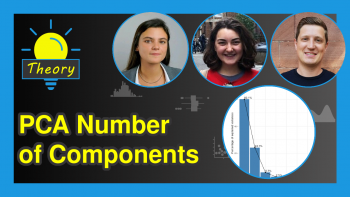What is Image Classification?
Hi! In this tutorial, you’ll learn about image classification, how it works, types of image classification and the many practical applications of image classification.
Here is an overview:
Let’s get into the discussion!
What is Image Classification?
Image classification is a supervised machine learning problem where an AI model is trained to recognize objects in an image using labeled example photos and then make a prediction.
It is a computer vision task that involves pixel analysis of images and categorizing them into different predefined classes or categories.

As depicted in Figure 1 above, an image classification model has correctly classified the image as a cat.
Artificial intelligence models can be taught to learn and classify images similar to how humans learn and identify different animals and objects.
How Does Image Classification Work?
The process of image classification follows seven steps, namely data collection, data preprocessing, feature extraction, training, validation and model evaluation, model fine-tuning & optimization, and deployment.
We will discuss each step one after the other.
- Data Collection: The first step is to gather a dataset of labeled images. These images should be representative of the classes or categories you want to classify. The dataset should be diverse and sufficiently large to ensure effective training and evaluation of the classification model.
- Data Preprocessing: Preprocessing prepares the images for the classification task. This step may involve resizing the images to a consistent resolution, converting them to a standard color space (such as RGB), normalizing pixel values, and removing any irrelevant or noisy information. Preprocessing helps in reducing variations and inconsistencies across the dataset, making it easier for the model to learn and generalize.
- Feature Extraction: Feature extraction involves transforming the raw image data into a format that can be understood and utilized by machine learning algorithms. Traditional methods involve manually designing features, such as extracting color histograms, texture descriptors, or edge features. However, deep learning models, particularly convolutional neural networks (CNNs), have become dominant in feature extraction for image classification. CNNs learn to extract relevant features through multiple convolutional and pooling layers, automatically capturing patterns and representations from the images.
- Training: The training phase involves feeding the preprocessed images and their corresponding labels into a machine learning model. The model learns to map the extracted features to the correct class labels through an optimization process. Various algorithms can be used for training, including support vector machines (SVMs), decision trees, or deep learning architectures like CNNs. During training, the model adjusts its internal parameters to minimize the difference between the predicted labels and the ground truth labels in the training data.
- Validation and Model Evaluation: Once the model is trained, it needs to be evaluated to assess its performance and generalization ability. A separate dataset, called the validation or test set, is used for this purpose. The model predicts the labels of the validation images, and these predictions are compared with the true labels to compute performance metrics such as accuracy, precision and recall, and F1 score. This evaluation helps to measure the model’s classification accuracy and identify any potential issues like overfitting or underfitting.
- Model Fine-Tuning and Optimization: Based on the evaluation results, the model can be fine-tuned and optimized. Techniques such as regularization, hyperparameter tuning, or adjusting the architecture of the model can be employed to improve its performance and generalization.
- Deployment: Once the model has been trained and fine-tuned, it can be deployed to classify new, unseen images. The model takes an input image, undergoes the necessary preprocessing steps, and then uses its learned features and parameters to predict the corresponding class label for the image.
Types of Image Classification
There are several types of image classification methods. The choice of method depends on the complexity of the problem, available data, and the specific requirements of the application.
Here are some common types of image classification:
- Binary Classification: Binary classification involves categorizing images into two classes. For example, distinguishing between images of cats and dogs, or identifying whether an image contains a specific object or not.
- Multi-Class Classification: In multi-class classification, images are classified into more than two classes. Each image is assigned a label from a set of predefined categories. For instance, classifying images into categories like animals, vehicles, or buildings.
- Fine-Grained Classification: Fine-grained classification focuses on differentiating between subclasses within a broader category. It involves classifying images with subtle visual differences, such as distinguishing between different species of birds or different types of flowers.
- Hierarchical Classification: Hierarchical classification involves organizing classes into a hierarchical structure. Images are first classified at a broader level and then further classified into more specific subcategories. This approach enables a more organized and granular classification process.
- Object Detection and Localization: Object detection goes beyond simple classification by not only identifying the presence of objects but also localizing their positions within the image. It involves drawing bounding boxes around the objects of interest.
- Semantic Segmentation: Semantic segmentation assigns a class label to each pixel in an image, dividing it into meaningful regions. This technique enables detailed understanding of the image’s content and is commonly used in applications like autonomous driving, medical imaging, and scene understanding.
- Weakly Supervised Classification: Weakly supervised classification is a technique where the training data is labeled at a coarse level, such as image-level labels, instead of pixel-level annotations or bounding boxes. The model learns to classify images using this limited supervision, making it more cost-effective and scalable for large-scale datasets.
- Transfer Learning: Transfer learning involves leveraging pre-trained models on large datasets to perform image classification on a different task or domain. This approach helps when limited labeled data is available for the specific classification task, as it enables the model to transfer knowledge from the pre-trained model to the target task.
Applications of Image Classification
Image classification has a wide range of practical applications across various industries. Below are some examples:
- Object Recognition: Image classification enables object recognition, where machines can identify and classify specific objects within images. This has applications in autonomous vehicles, robotics, surveillance systems, and quality control in manufacturing.
- Medical Image Analysis: Image classification is vital in medical imaging, assisting in the diagnosis and treatment of diseases. It helps in identifying abnormalities, classifying medical images (such as X-rays, MRIs, or CT scans) based on conditions or diseases, and assisting radiologists in making accurate interpretations.
- Facial Recognition: Image classification is used in facial recognition systems for identity verification, access control, surveillance, and law enforcement. It involves classifying facial features and matching them against a database of known individuals.
- Content-Based Image Retrieval: Image classification enables content-based image retrieval, where users can search for images based on their visual content. This has applications in image search engines, e-commerce platforms, and digital asset management systems.
- Agriculture: Image classification helps in crop monitoring, disease detection, yield estimation, and precision farming. It enables the identification of plant species, crop health assessment, and detection of pests or weeds, leading to better crop management and increased productivity.
- Geospatial Analysis: Image classification is used in satellite and aerial imagery analysis for land cover classification, urban planning, environmental monitoring, and disaster response. It helps in identifying and monitoring land use, vegetation, water bodies, and changes in the natural environment.
- E-commerce and Advertising: Image classification plays a role in product categorization, visual search, and personalized recommendations in e-commerce platforms. It helps in analyzing and classifying product images, understanding customer preferences, and delivering targeted advertisements based on visual content.
Image classification is just one of the many applications of artificial intelligence. It is ubiquitous, and every day, without even realizing it, we use image classification AI, such as in video games, on social media platforms, and on retail websites.
Video, Further Resources & Summary
Do you need more explanations on what image classification is? Then you should have a look at the following YouTube video of the Statistics Globe YouTube channel.
In the video, we explain in some more detail what image classification is.
The YouTube video will be added soon.
Furthermore, you could take a look at some of the other tutorials on Statistics Globe:
This post has explained what image classification is.
In the next article, we will build an image classification application using a pre-trained model in the Python programming language. Be sure to keep an eye out for it!
In case you have further questions, you may leave a comment below.
This page was created in collaboration with Ifeanyi Idiaye. You might check out Ifeanyi’s personal author page to read more about his academic background and the other articles he has written for the Statistics Globe website.







